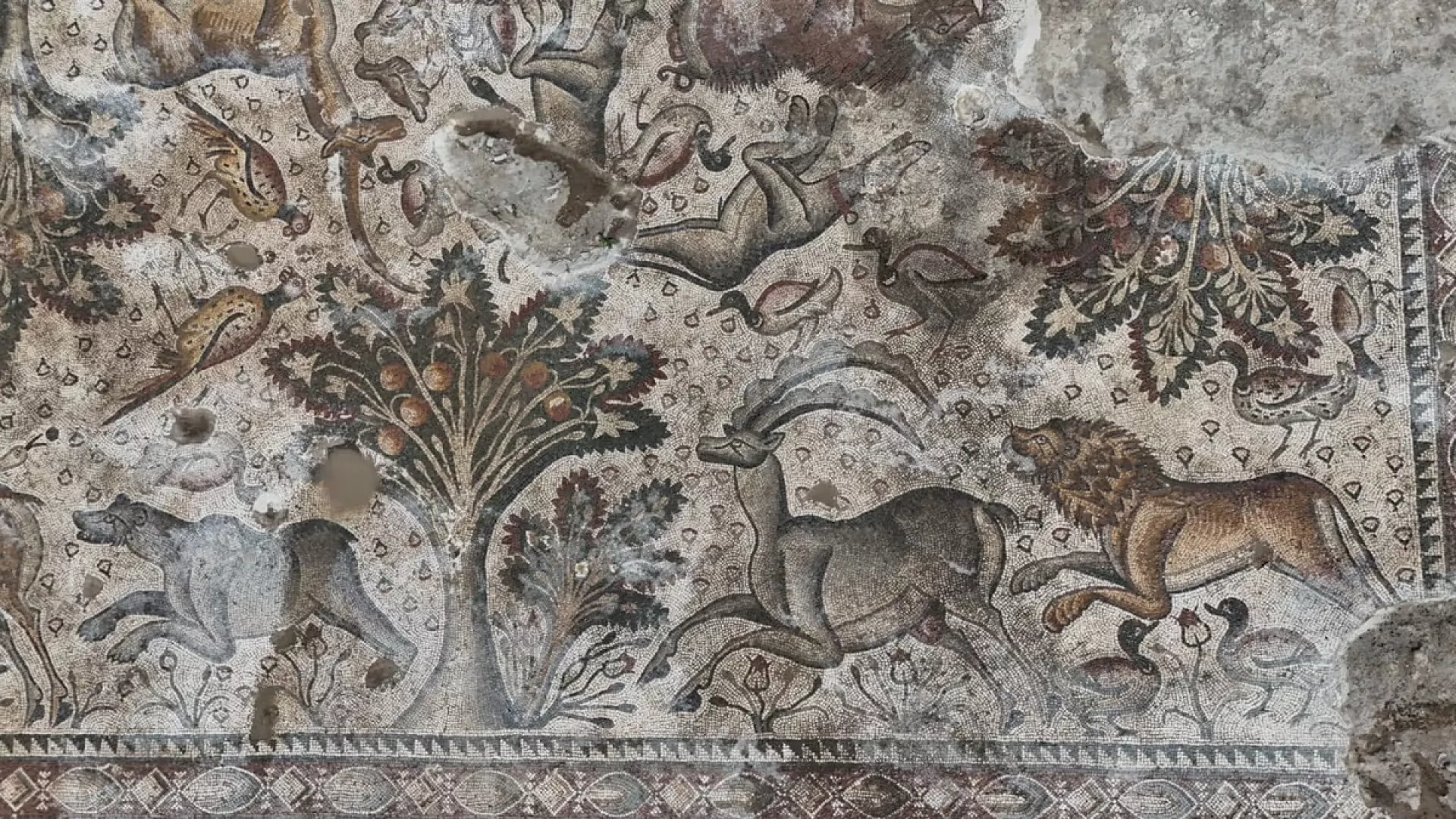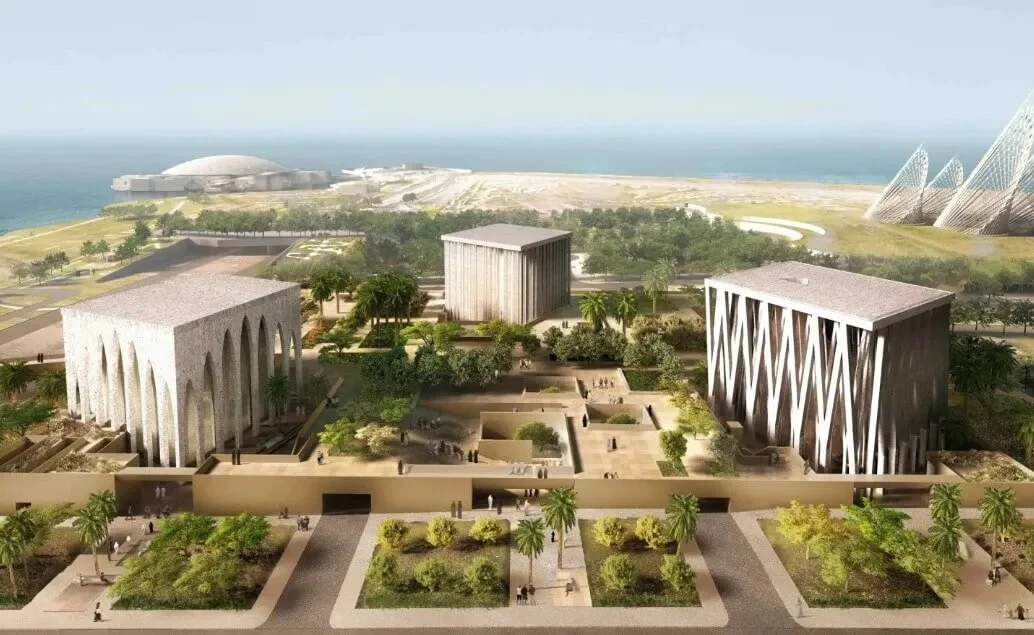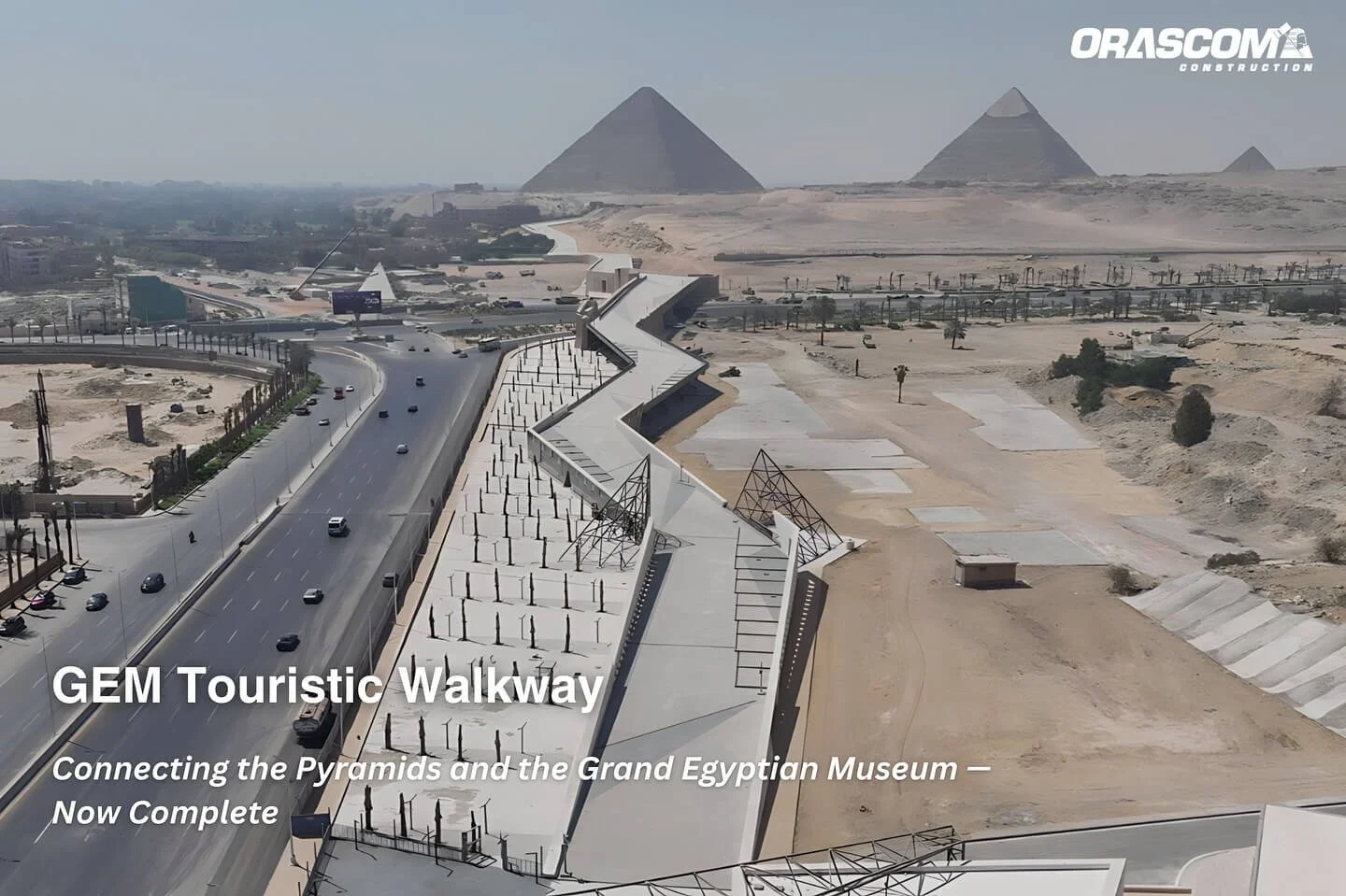A breathtaking mosaic from the late Roman era has been unearthed in eastern Türkiye, showcasing vibrant hunting scenes and rare depictions of Anatolian wildlife. Experts believe it could be the largest of its kind ever found in the country.
A Chance Discovery in Salkaya
The mosaic was discovered in April 2023 by farmer Mehmet Emin Sualp while planting cherry saplings in the village of Salkaya, 500 kilometers east of Ankara. Buried just 50 centimeters below the soil, this ancient artwork had remained hidden for centuries.
Spanning an impressive 84 square meters, the mosaic features intricate scenes of animals in action. A lion chases a mountain goat, a bear hunts a stag, and greyhounds corner a wild boar. Among these vivid images, an Anatolian leopard, rarely depicted in Roman art, is shown sinking its teeth into an ostrich. These dynamic portrayals are balanced by tranquil depictions of pheasants, ducks, geese, blooming roses, and pomegranate trees, creating a striking contrast between the fierce and serene.
A Unique and Historic Find
“This mosaic is unparalleled in its survival and its depiction of animals native to this region,” said Emre Çayır, lead archaeologist for the excavation, which is overseen by the state Archaeology and Ethnography Museum of Elazığ. “While larger mosaics exist in Türkiye, they typically feature geometric patterns or mythological themes. This one uniquely captures the essence of the region’s natural world and hunting traditions.”
Çayır explained the symbolic significance of the artwork, noting that lions and bears often represented authority in Roman culture, while the hunting scenes reflect humanity’s place within the food chain.
Preserving a Glimpse Into the Past
Archaeologists speculate that the mosaic was part of a Roman official’s residence, serving as an expression of power and prestige. Other discoveries at the site include a basalt road, an irrigation system, and a possible winemaking facility. Coins found in the area suggest the settlement thrived from the late Roman to early Byzantine periods.
The mosaic owes its remarkable preservation to a collapsed wooden roof that shielded it from damage over the centuries. A team of conservators is now working to protect the site, which has been temporarily covered to guard against winter weather.
What’s Next for the Mosaic?
Authorities are considering whether to relocate the mosaic to a museum or establish an on-site protective structure, a decision that hinges on further excavations and findings. Provincial governor Numan Hatipoğlu emphasized the importance of thorough study before finalizing preservation plans.
A Window Into Ancient Civilizations
This discovery has captivated Türkiye’s archaeological community, offering valuable insights into the culture and artistry of a long-lost civilization. As excavation continues, researchers hope to uncover more details about daily life, power dynamics, and regional influences during the Roman era.
With each artifact unearthed, the ancient settlement near Salkaya reveals its stories, connecting modern Türkiye to its rich and complex past.







